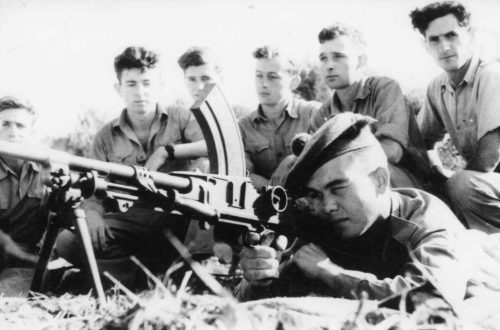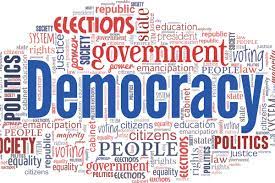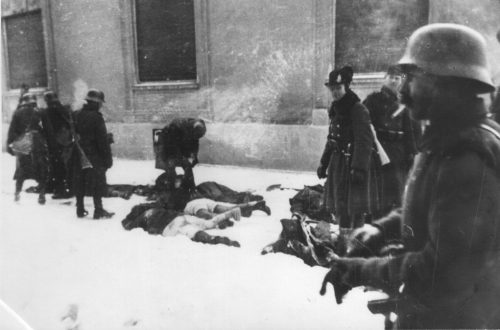When I began blogging here, one of the things I wanted to do with some regularity was to recall some of the largely-forgotten events in US labor history.
I made a start with my post (recently updated) on the 90th anniversary of the stampede that killed more than 70 people (mostly children of striking copper miners) in Calumet, Michigan. And more recently I posted about the Triangle Shirtwaist fire in New York. But I hope to do so more consistently.
So I want to note that this date in 1899 marked the beginning of a strike by the children who sold newspapers in New York City– one of several industrial actions by kids in the era before child labor laws.

According to one account:
In the late 1800s, the two most powerful men in the newspaper industry were Joseph Pulitzer and William Randolph Hearst. The USA was the cultural and commercial centre of the world, and it was through newspapers that Americans watched their country flourish.
…..
Pulitzer and Hearst simplified the language in their papers and added more pictures, so that they could be read by the foreigners and the uneducated. Tactics such as these saw their sales rise to unprecedented numbers; Pulitzer’s New York World reaching seeing circulation figures of around 360,000. Most of these papers were distributed by ‘newsies’.We’ve all seen newsies, depicted in movies and cartoons as charming, cheeky kids in waistcoats and flat caps standing on street corners yelling “Extra! Extra!” But these depictions are the result, some say, of a deliberate effort of the newspapers of the time to glamourise and sugar-coat the lives of the children who distributed their product.
The truth was the newsies were desperately poor, often homeless and starving. They were not employees of the newspapers, they simply bought the papers by the bundle, 100 papers for 50 cents, and sold them on the streets for a tiny profit. The newspapers would not buy back unsold copies, so while a slow news day might mean a reduced profit for them, it meant missed meals for the newsies.
Everyone knows that wars sell papers, but few would have gone to the same lengths as W.R Hearst, who many agree triggered the Spanish-American War in 1898 in order to add excitement to his headlines. As demand for papers increased, the newsies saw prices increase from 50 cents per bundle to 60 cents. After the war, the prices of papers returned to normal. All except those of Pulitzer and Hearst. Their greed sparked a week-long strike that destroyed their profits and brought New York City to a standstill.
The Newsboys Strike of 1899 was headed by Kid Blink, an eyepatch-sporting boy in his early teens. “I’m trying to figure how ten cents on a hundred papers can mean more to a millionaire than it does to newsboys, an’ I can’t see it,” he said, “If they can’t spare it, how can we?”
Kid Blink and his colleagues were regularly quoted in the papers, usually phonetically to keep their accents intact. Most people found this endearing, but the newsies found it disrespectful and asked for it to stop. It didn’t, but it’s likely that they were popular with newspapers not targeted by strike action. It seems reasonable to surmise that if people weren’t buying Hearst’s New York Morning Journal or Pulitzer’s New York World, they were buying some other paper instead. Kid Blink managed to amass a force of around 5000 newsies, many of whom had equally fantastic names such as Barney Peanuts, Race Track Higgins, Crazy Arborn and Crutch Morris. They managed to bring much of NYC to a standstill by organising gatherings on Brooklyn Bridge. “Me men is nobul, and wid such as dese to oppose der neferarious schemes how can de blokes hope to win?”
“De blokes” hoped to win by standing their ground. Understandably, they imagined the newsies would run out of food before they did. But the strike continued, and rumours began to circulate about Hearst and Pulitzer sending big men to bully the small children into submitting. There was violence on the streets; papers reported on threats, fights and bribes. Newspaper delivery vans were attacked. At one point, Kid Blink was arrested for disorderly conduct during a march and was later released. He continued to rally his young crowd and speak to the other newspapers:
“Friens and feller workers. Dis is a time which tries de hearts of men. Dis is de time when we’se got to stick together like glue…. We know wot we wants and we’ll git it even if we is blind.”
The strike finally came to an end when Hearst and Pulitzer, while refusing to move on price, agreed to buy back any unsold papers from the newsies. The children had risked starvation and their families (those that had them) had suffered. There were even reports of bribes and threats of violence against strikers as the newspapers allegedly hired thugs to discourage them from making their stand. The newsboys had fought on, within a week they dragged the circulation of New York World from 360,000 to just 125,000.

I was unaware that Disney had produced a film musical based on the strike called “Newsies.” It was a box-office flop. Has anyone seen it? I’ve added it to my Netflix queue.


